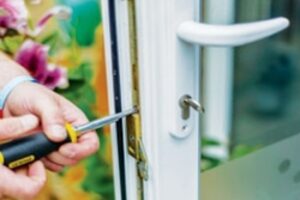The Reasons To Focus On Enhancing Cylinder Lock Replacement

A Comprehensive Guide to Cylinder Lock Replacement
Replacing a cylinder lock can seem like a difficult job, but with the ideal details and understanding, it can be a manageable DIY job. Whether you are handling a failed lock, upgrading security, or requiring a key modification, cylinder lock replacement is a necessary skill. This short article details what you require to understand before embarking on this task, providing clear, detailed instructions, typical pitfalls to avoid, and a list of FAQs to address any sticking around doubts.
What is a Cylinder Lock?
A cylinder lock is a frequently used locking mechanism found in residential and commercial spaces. These locks are known for their cylindrical shape and are usually set up within a door. www.repairmywindowsanddoors.co.uk locking mechanism itself is included within the cylinder, which can be easily removed and changed, making it a preferred among locksmiths and DIY enthusiasts alike.
Key Components of a Cylinder Lock
- Cylinder: The main part where the key is placed.
- Plug: The rotating part of the cylinder that engages the lock.
- Real estate: The outer shell that holds the internal components.
- Keyway: The specific shape of the opening into which a secret is inserted.
Reasons for Replacing a Cylinder Lock
- Lost Keys: If secrets are lost or taken, changing the lock ensures security.
- Updating Security: Newer locks typically include advanced innovation and much better materials.
- Key Changes: When moving into a new home, it's smart to alter the locks to prevent unauthorized gain access to.
- Malfunctioning Lock: Sometimes locks break and stop working to run correctly.
Steps to Replace a Cylinder Lock
Replacing a cylinder lock can be broken down into numerous uncomplicated actions. Below is a detailed guide to help while doing so:
Tools Required
- Screwdriver (Phillips or flat-head depending on your lock)
- New cylinder lock
- Measuring tape
- Pen and paper (for notes if needed)
Step-by-Step Instructions
Eliminate the Old Lock
- Locate the screws protecting the lock casing on the door's edge.
- Use the screwdriver to get rid of these screws.
- Once unscrewed, pull the cylinder out from the door.
Step the Existing Cylinder
- Taking measurements is vital. Step the cylinder length from the back of the cylinder to the front (the exposed part).
- If your lock is a split cylinder, step both areas.
Purchase a Replacement Lock
- Utilizing the measurements, select a replacement cylinder lock that matches the measurements.
- Consider buying a lock with improved security features.
Place the New Cylinder
- Align the new cylinder with the hole in the door and slide it in. Make certain the cam (the turning mechanism) aligns properly with the locking mechanism.
- Secure it in place by reattaching the screws eliminated in the very first step.
Test the New Lock
- Insert the new key and test the lock to ensure it operates smoothly. If the lock doesn't turn quickly, remove it and inspect positioning once again.
Reassemble Any Additional Components
- If your lock has a housing or decorative plate, reattach these parts to end up the installation.
Final Checks
- Ensure that the door closes correctly and that the lock engages firmly when turned.
Table: Common Cylinder Lock Types
| Lock Type | Description | Security Level |
|---|---|---|
| Single Cylinder | Run with a secret from one side, and a thumb turn on the opposite. | Moderate |
| Double Cylinder | Requires a key for both sides, ideal for doors with glass panels. | High |
| Smart Cylinder | Incorporates with smart home innovation, permitting keyless entry. | Really High |
| Europe Cylinder | Common in European countries, features a specific keyway and is typically longer. | High |
Often Asked Questions (FAQs)
What if I can't get rid of the old cylinder lock?
If you're struggling to remove the old lock, ensure you have actually removed all screws. Sometimes a little wiggling or using a gentle pull can assist.
Can I change a lock without calling a locksmith?
Yes, replacing a locks cylinder is a manageable job for most DIY lovers, as long as you follow the standards offered.
How do I pick the right cylinder lock?
Select a lock that matches the size requirements of your old lock and offers security features that align with your needs.
Is it safe to install a cylinder lock myself?
As long as you follow the appropriate procedure and make sure everything is fitted properly, installing a lock yourself is safe. However, if you're not sure, an expert locksmith is constantly an alternative.
Do I need unique tools to replace a cylinder lock?
Many cylinder locks can be changed utilizing typical household tools like screwdrivers. Special tools are not normally needed.
Changing a cylinder lock does not need to be made complex. By understanding the parts, following a clear detailed procedure, and resolving any worry about the provided FAQs, people can effectively secure their doors with new locks. Apart from improving safety, this DIY skill empowers house owners to organize their security measures, guaranteeing peace of mind in their personal areas. Whether you're updating for a better security option or simply changing a used lock, the knowledge acquired here will prove important.

